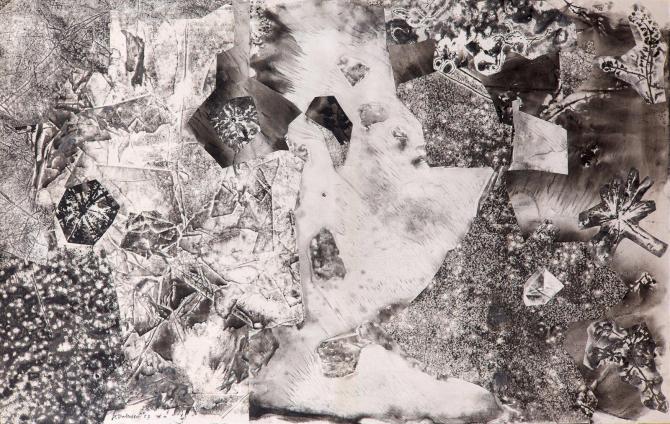
assemblage
- Dewsbury: the process of putting together a mix of relations
- Phillips: agencement/ arrangement,fixing, fitting
- Wise 1: process of arranging and organizing and claims for identity, character and territoty
- Ballantyne: new identities are generated through connections
- De Landa 1: assemblage as a whole cannot be reduced to the aggregate properties of its parts since it is characterized by connections and capacities rather than the properties of the parts
- Anderson & McFarlane 1: it includes heterogeneous human/non human, organic/inorganic, and technical/natural elements
- De Landa 2: it is an alliance of heterogeneous elements
- Wise 2: they are dynamically made and unmade in terms of the two axes of territorialisation (stabilization)/ deterritorialisation (destabilization) and language (express)/technology (material)
- Dovey 1: assemblages are at once express and material
- Farias 1: assemblages focus both on actual/material and possible/emergent
- Deleuze & Guattari: they are fundamentally territorial
- De Landa 3: territorialization is both spatial and non-spatial
- Dovey 2: territory is a stabilized assemblage
- Angelo: it addresses the inseparability of sociality and spatiality and the ways in which their relations and liaisons are established in the city and urban life
- Anderson & McFarlane 2: it is an a priori reduction of sociality/spatiality to any fixed forms/set of forms of processes or relations
- De Landa 4: assemblage theory offers a ‘bottom-up” ontology that works with analytical techniques rather than logical reasoning (…) the theory opposes the reduction of the entities to the essences asa deficiency of the social realism
- De Landa 5: they are continuously in the process of emerging and becoming
- Deleuze’s becoming-in-the-world as opposed to Heidegger’s being-in-the-world
- Farias 2: assemblage thinking tends to develop empirical knowledge rather than theoretical analysis and critique / it is about inquiry and explorative engagement
assemblage and the city
- Farias: the city as multiplicity rather than a whole
- McFarlane: assemblage refers to ways in which urbanism is produced not as a “resultant formation” but as an ongoing process of construction (…) it refers to city as a verb in making urbanism through historical and potential relations
- Dovey: assemblages are the main products of the “flows of desire”
assemblage and critical urbanism
- McFarlane: assemblage as a concept, orientation, and imaginary/ as a relational composition process that contributes to the labour and socio-materiality of the city/ as an orientation to the potentiality of actors and sites in relation to history, required labour, and the capacity of urban process/ it offers some orientations to “critical urbanism” in terms of focusing on potentiality, agency of materials and composition of the “social imaginary”
- Tonkiss: assemblage thinking is likely to generate a “template urbanism,” rather than a critical one
- Brenner, Madden & Wachsmuth: they adopt the theory in relation to the political economy
implications
- One of the critical contributions of assemblage thinking for understanding the complexity of the city problems is to encourage multiscalar thinking
- the diagram can be understood as an “abstract machine” in Deleuzian concept of assemblage thinking. In this way, diagrammatic thinking can be used as a means to abstractly illustrate the complexities of an urban assemblage as both a product and process
- mapping can be considered as an abstraction that has the capacity to unravel what De Landa (2005) calls “real virtuality”, which is a kind of “reality” that has not
been “actualised” yet - diagrams, maps, and types have the capacity to produce a kind of “spatial knowledge” that can be effectively used as a basis to draw on the ways in which the city works in relation to spatiality and sociality. It also assists with specifying the space of possible solutions for the existing city problems and embodied capacities for transformational change
- assemblage theory reads place as a multiplicity that is in the process of “becoming” in relation to social-spatial and material-express alignments
References
Kamalipour, H., Peimani, N., 2015. Assemblage Thinking and the City: Implications for Urban Studies. In Current Urban Studies, 2015, Vol.3, pp. 402-408, http://dx.doi.org/10.4236/cus.2015.34031
Image: Topographie du sol, mars 1957 Assemblage d’empreintes. Signée «J. Dubuffet» et datée «57» en bas à gauche. Titrée, signée «J. Dubuffet» et datée «mars 57» au dos. 60 x 105 cm, Available here
